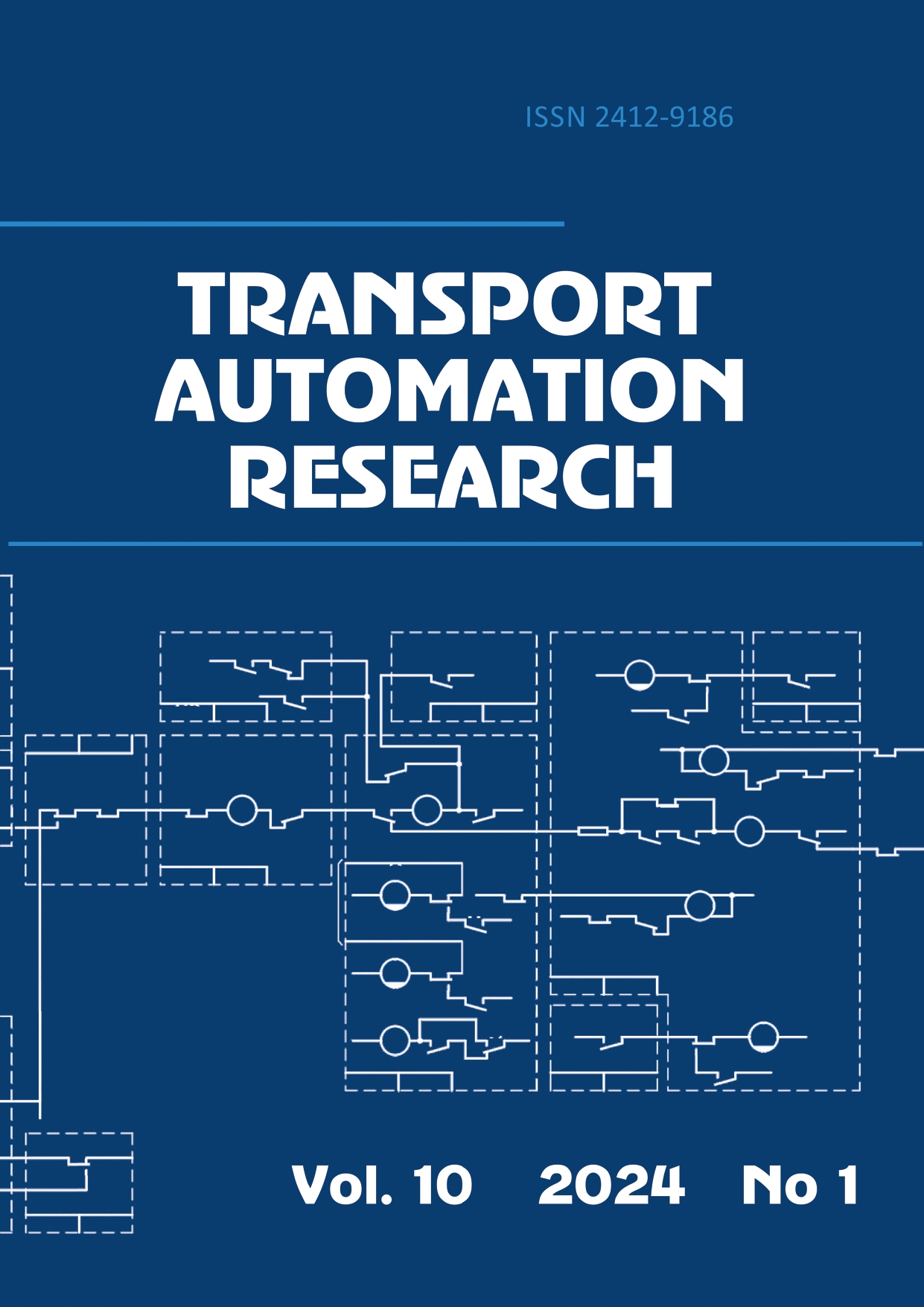St. Petersburg, Russian Federation
Russian Federation
Russian Federation
Russian Federation
UDC 629.3.076
The intellectualization of water transport is accompanied by an expansion of the landscape of threats to transport security, caused by the characteristics and weaknesses of the technologies being introduced, which are the convergence of information and telecommunication technologies, automated and automatic control technologies and artificial intelligence. The peculiarity of these technologies is working with large volumes of information. Violation of the security of information processed in intelligent systems of water transport (illegal access, modification, deletion and similar unauthorized influence) causes a violation of transport security and, as a consequence, the security of critical information infrastructure and the country’s critical infrastructure, national security. Convergent technologies used in intelligent transport systems are characterized by multiple and poorly formalized manifestations of the consequences of threats. The article presents a model for assessing the risks of information security of intelligent water transport systems, based on the methods of the theory of fuzzy sets and fuzzy logic, the use of which makes it possible to take into account the above-mentioned features of the technologies being implemented. The hierarchical structure of the model and the use of fuzzy set theory and fuzzy logic methods make it possible to adapt the model to various risk criteria, types of input data and the level of detail of risk analysis. For the presented model, a methodology for assessing information security risks has been developed and an example of risk calculation is given. The developed model and methodology are intended to build an information security risk management system for autonomous shipping, implementing technologies of hybrid (augmented, extended) intelligence, providing for the use of artificial intelligence controlled by people.
autonomous control system, tram traffic, efficiency of autonomous control, automated control system, car driving, tram route
1. Gorev A., Solodkiy A., Popova O., Ospanov D.Formation of priority movement corridors of urban passenger transport // IOP Conference Series: Materials Science and Engineering, Volume 632, International Conference on Innovations in Automotive and Aerospace Engineering 27 May to 1 June 2019, Irkutsk National Research Technical University, Irkutsk, Russiahttps://doi.org/10.1088/1757-899X/632/1/012013.
2. Gorev A.E. Osnovnye zadachi razvitiya passazhirskogo transporta obshchego pol’zovaniya v Sankt-Peterburge // Transport Rossijskoj Federacii.2020. № 3-4 (88-89).S. 59-62.EDN RJLSKC.
3. The Autonomous Simens tram / Andrew W.Palmer; Albi Sema; Wolfram Martens; Peter Rudolph; Wolfgang Waizenegger // 2020 IEEE 23rd International Conference on Intelligent Transportation Systems (ITSC), 20-23 September 2020. DOI:https://doi.org/10.1109/ITSC45102.2020.9294699.
4. Gorodskoj transport. Sistema pomoshchi mashinistu na baze iskusstvennogo intellekta COGNITIVE TRAM PILOT. URL: https://cognitivepilot.com/products/cognitive-tram-pilot/?ysclid=lslajhtio9436736255 (data obrashcheniya: 15.02.2024).
5. Normativnoe regulirovanie ekspluatacii bespilotnyh transportnyh sredstv: sostoyanie i perspektivy / S. V. ZHankaziev, A. I. Vorob’ev, A. YU. Zabudskij [i dr.] // Infor-macionnye tekhnologii i innovacii na transporte: Materialy 5-oj Mezhdunarodnoj nauchno-prakticheskoj konferencii, Oryol, 22-23 maya 2019 goda / Pod obshchej redakciej A. N. Novikova.Oryol: Orlovskij gosudarstvennyj universitet im. I.S.Turgeneva, 2020.S. 190-198.EDN CWQOSA.
6. Pierre Verzat, Pierre Gosset. Automated and Autonomous Public Transport Possibilities, Chal-lenges and Technologies.-SYSTRA, 20 p. URL: https://www.systra.com/wp-content/uploads/2020/09/systra-automated_and_autonomous_public_transport_2018.pdf (data obrashcheniya: 20.02.2024).
7. Technical Description of the SIRIO Platform Vehicle. AnsaldoBreda, 92 p.
8. SAE J30162018 Taxonomy and Definitions for Terms Related to On Road Motor Vehicle Au-tomated Driving Systems, SAE, 2021. 35 p.
9. IEC 62290-1 Railway applications-Urban guided transport management and command/control systems-Part 1: System principles and fundamental concept. Edition 2.0, IEC, 2014. 13 p.
10. Prikaz Mintransa RF ot 20 oktyabrya 2021 g. № 351 “Ob utverzhdenii Poryadka opredele-niya nachal’noj (maksimal’noj) ceny kontrakta, a takzhe ceny kontrakta, zaklyuchaemogo s edinstvennym postavshchikom (podryadchikom, ispolnitelem), pri osushchestvlenii zakupok v sfere regulyarnyh perevozok passazhirov i bagazha avtomobil’nym transportom i gorodskim nazemnym elektricheskim transportom”.
11. Wadud Z.Fully automated vehicles: a cost of ownership analysis to inform early adoption // Transp. Res. A Policy Pract. 101. 2017. P. 163-176.
12. Wadud Z., MacKenzie D., Leiby P. Help or hindrance? The travel, energy and carbon impacts of highly automated vehicles // Transp. Res. A Policy Pract. 86. 2016. P. 1-18.
13. Jansson J. O. A simple bus line model for optimization of service frequency and bus size // J.Transp. Econ. Policy 14 (1). 1980. P. 53-80.
14. Ongel A., Loewer E., Roemer F., et al. Economic as-sessment of autonomous electric microtransit vehicles. Sustainability 11 (3), 2019. URL: Sus-tainability | Free Full-Text | Economic Assessment of Autonomous Electric Microtransit Vehi-cles (mdpi.com) (data obrashcheniya: 21.02.2024).
15. National Guidelines for Transport System Management in Australia, vol. 4. Urban Transport. Australian Transport Council, 2006. URL: PPT-National Guidelines for Transport System Management in Australia PowerPoint Presentation - ID:7087241 (slideserve.com) (data obrashcheniya: 22.02.2024).
16. Abe R. Introducing autonomous buses and taxis: quantifying the potential benefits in Japanese transportation systems // Transp. Res. A Policy Pract. 126. 2019. P. 94-113.
17. Tirachini A., Antoniou C. The economics of automated public transport: Effects on operator cost, travel time, fare and subsidy // Economics of Transportation 21 (2020) 100151.
18. Bosch P.M., Becker F., Becker H., et al. Cost-based analysis of autonomous mobility services // Transp. Policy 64. 2018. P. 76-91.
19. Kyriakidis M., de Winter, J. C. F., Stanton N., et al. A human factors perspective on automated driving // Theor. Issues Ergon. SCI. 20 (3). 2019. P. 223-249.
20. Lazarus J., Shaheen S., Young S. E., et al. Shared Automated Mobility and Public Transport // Road Vehicle Automation. 2018. Vol. 4. P. 141-161.
21. Almlöf E., Nybacka M., Pernestål A., et al. Will leisure trips be more affected than work trips by autonomous technology? Modelling self-driving public transport and cars in Stockholm // Transportation Research, Part A Policy and Practice 165. 2022. P. 1-19.










